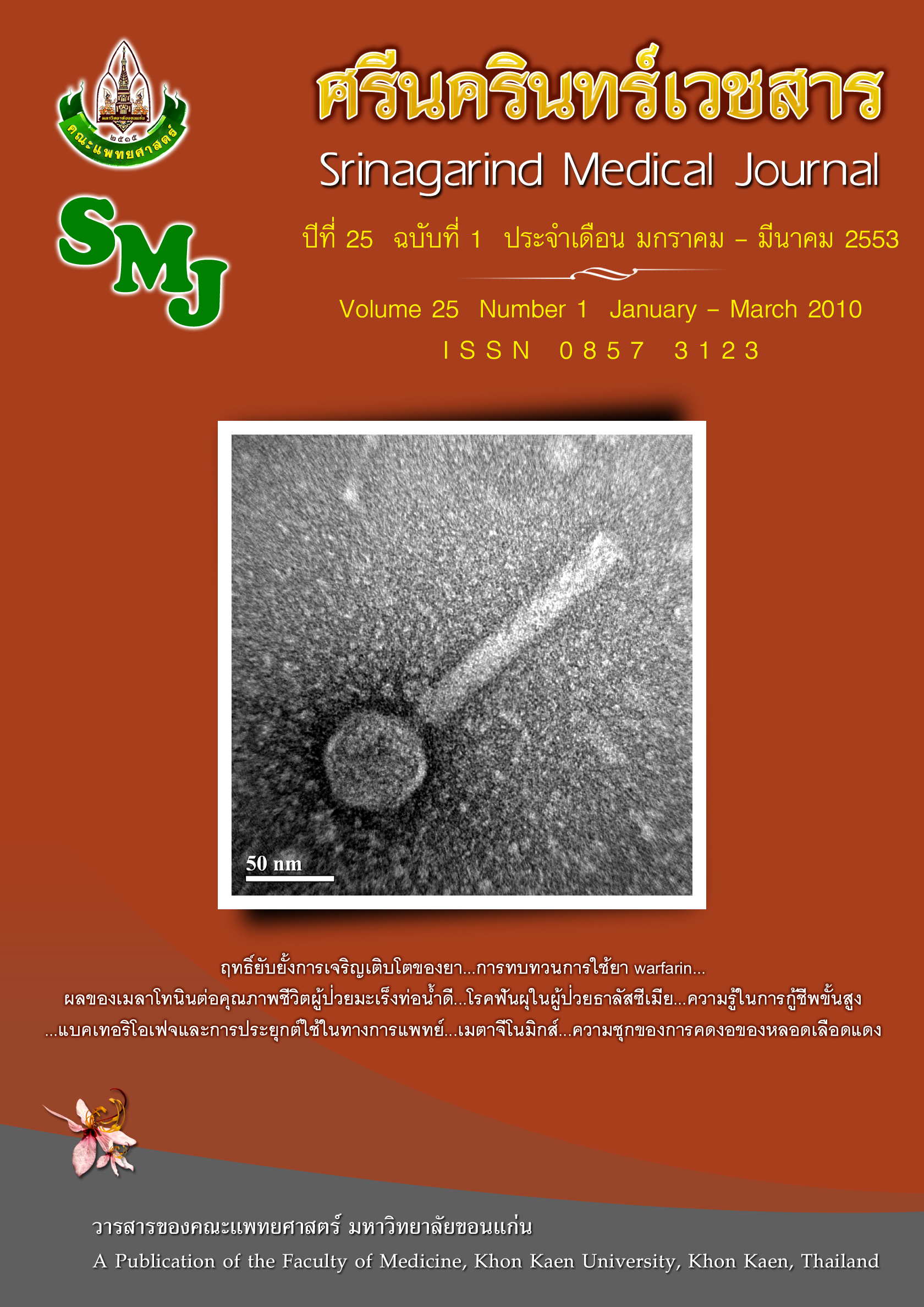Bacteriophages and their Medical Applications
Abstract
Abstract
Bacteriophages or phages are virus of bacteria which can be found enormously in nature together with their specific hosts. They can be classified by their type of nucleic acid (DNA or RNA) and morphology of phage particle into 13 families. There are two forms of life cycle which are lytic (virulent phage) that causes bacterial lysis after complete the phage propagation to release the progeny and lysogenic (temperate phage) that integrate phage genome into bacterial genome without causing cell lysis. According to their specificity of infection, they can be used as a genetic engineering tool for cloning, phage typing to classify pathogenic bacterial strain, bio-control in food and biotechnology and also phage therapy which used phage itself or its endolysin enzyme for medical treatment especially for antibiotic resistance bacteria. The endolysins structure in general consists of catalytic domain and binding domain. They act differently to lyse Gram-positive and Gram-negative bacteria because of the different in cell wall compositions. When chimeric enzymes were used, they could provide killing activity with new host specificity. Additionally, researcher found the synergistic therapeutic effect when combined different phage enzymes for bacterial killing. With the specificity of bacteriophages to their host and efficiency of lysis mechanism, their applications could be enormous and we should be able to obtain a great benefit from them in the near future.




